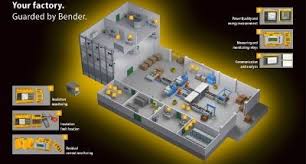Introduction
The electrical designer, installer and maintenance team are all expected to provide an installation that is safe, cost effective and reliable throughout its lifetime.
The course begins with the fundamental principles that always apply to ensure safety, the course then progresses through basic design procedures, inspection, testing and maintenance requirements, concluding with a review of power quality problems that affect the reliability of an installation where high technology interfaces with a supply.
The course will provide an understanding of:
- The initial assessment of an installation prior to the design
- Selection of protective devices
- Cable sizing and installation
- Inspection and testing procedures
- The maintenance requirements
Objectives
The delegate will gain detailed appreciation of:
- The safety factors required by national and international standards
- The functional considerations that a designer has to take into account
- How new technology can impact on the design particularly power quality
- Safety requirements during installation, inspection and testing
- Inspection and testing techniques that affect the maintenance requirements
- How to improve productivity by improving the reliability of an installation
Training Methodology
The course is conducted as modular lectures with encouragement for the delegate to interact. Case studies are included to illustrate how problems can develop as technology changes.
A design project is included to enable the delegate to practice the techniques of calculating the parameters of loads, protective devices and cable sizing for safety and functional purposes. Questions are welcomed throughout the course and during break sessions.
Organizational Impact
- The additional knowledge will help in the design of new electrical installations
- This knowledge will help in upgrading an existing installation when new technology is to be added
- The course will help an organisation to improve its effectiveness in ensuring compliance with standards
- Knowledge of the impact of new technology will help in ensuring reliability of an installation
- Knowledge of the design implications to withstand failures due to power quality
- How inspection, testing and maintenance improve the resilience of an installation
Personal Impact
On successful completion of this course, delegates will understand:
- The basis for safety and functional design
- How to assess the characteristics needed to commence a design process
- The earthing and bonding requirements of an installation for safety and function
- How new technology impacts on new and existing electrical installations
- Inspection and testing techniques that affect the maintenance routine of an installation
- How to improve productivity by improving power quality
Who Should Attend?
This course is aimed at personnel who would like to expand their knowledge of the safety and functional design of an electrical installation and is aimed at:
- Mechanical and Electrical Engineers
- Mechanical and Electrical Technicians
- Electricians
- Maintenance personnel with responsibility for an electrical installation
SEMINAR OUTLINE
DAY 1
Preliminary Design Requirements
The design process requires consideration of the installation requirements with respect to the load characteristics, the circuit arrangements, and the source of supply.
- Building services
- Purpose of an installation
- Cables
- External influences
- Transformers
- Compatibility
- Protective devices
- Maintainability
DAY 2
Design Characteristics
To enable work to begin on any electrical installation a detailed specification is required. This specification will be based on the safety and functional requirements considered in Day 1.
- Electrical safety
- Cable installation
- IEC 60364
- Terminations
- Wiring regulations
- Inspection and testing
- Cable sizing
- Documentation
DAY 3
Designing an Installation
Building on the first two days of the course this module puts into practice the theories developed.
- Single phase design
- Power quality
- Three phase design
- Cable requirements
- Protective device selection
- Installation method
- Earthing and bonding
- Source of supply
DAY 4
Commissioning and Testing
The requirements for any maintenance routine begin during the design process and continue though installation into operation. In many countries there is also a legal requirement to maintain an installation in a safe condition.
- The need to maintain
- Test results
- What is maintenance
- Documentation
- Introduction to commissioning
- Harmonics
- Inspection
- Earth leakage
DAY 5
Periodic Maintenance
After the initial verification of the safety and function of the installation it is necessary to ensure that safety remains effective throughout the lifetime of the installation.
- Maintenance Planning
- Periodic inspection
- Equipment reliability
- Complex testing
- Categories of system
- Harmonic analysis
- Safety critical
- Records

